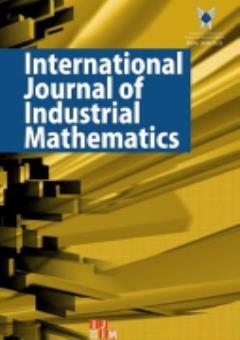An Inverse Dynamic FDH Approach to Estimate Outputs
محورهای موضوعی : مجله بین المللی ریاضیات صنعتی
F. Asadi
1
,
S. Kordrostami
2
,
AR. Amirteimoori
3
![]() ,
M. Bazrafshan
4
,
M. Bazrafshan
4
1 - Department of Industrial Engineering, Lahijan Branch, Islamic Azad University, Lahijan, Iran.
2 - Department of Mathematics, Lahijan Branch, Islamic Azad University, Lahijan, Iran.
3 - Department of Applied Mathematics, Rasht Branch, Islamic Azad University, Rasht, Iran.
4 - Department of Industrial Engineering, Lahijan Branch, Islamic Azad University, Lahijan, Iran.
کلید واژه: Data envelopment analysis (DEA), Network DEA, Inverse DEA, Free disposal hull (FDH), Dynamic DEA,
چکیده مقاله :
In many situations, the performance and the changes of outputs related to dynamic systems should be estimated while the convexity property is relaxed. Accordingly, first, a dynamic free disposal hull (FDH) model is proposed in this paper to address the efficiency of processes in multiple period of time while the convexity assumption is unsatisfied. Also, two problems, including a mixed integer linear programming and a linear programming model are provided to compute the dynamic FDH model that is a mixed integer non-linear programming problem. Then the changes of multi-period outputs are dealt with for changes of inputs related to several periods using the proposed inverse dynamic FDH model while the efficiency levels are preserved. A case study of gas industry is, moreover, presented to demonstrate the introduced models. The results show the proposed technique is useful to analyze the performance and to estimate outputs in dynamic processes without including convexity.
In many situations, the performance and the changes of outputs related to dynamic systems should be estimated while the convexity property is relaxed. Accordingly, first, a dynamic free disposal hull (FDH) model is proposed in this paper to address the efficiency of processes in multiple period of time while the convexity assumption is unsatisfied. Also, two problems, including a mixed integer linear programming and a linear programming model are provided to compute the dynamic FDH model that is a mixed integer non-linear programming problem. Then the changes of multi-period outputs are dealt with for changes of inputs related to several periods using the proposed inverse dynamic FDH model while the efficiency levels are preserved. A case study of gas industry is, moreover, presented to demonstrate the introduced models. The results show the proposed technique is useful to analyze the performance and to estimate outputs in dynamic processes without including convexity.


